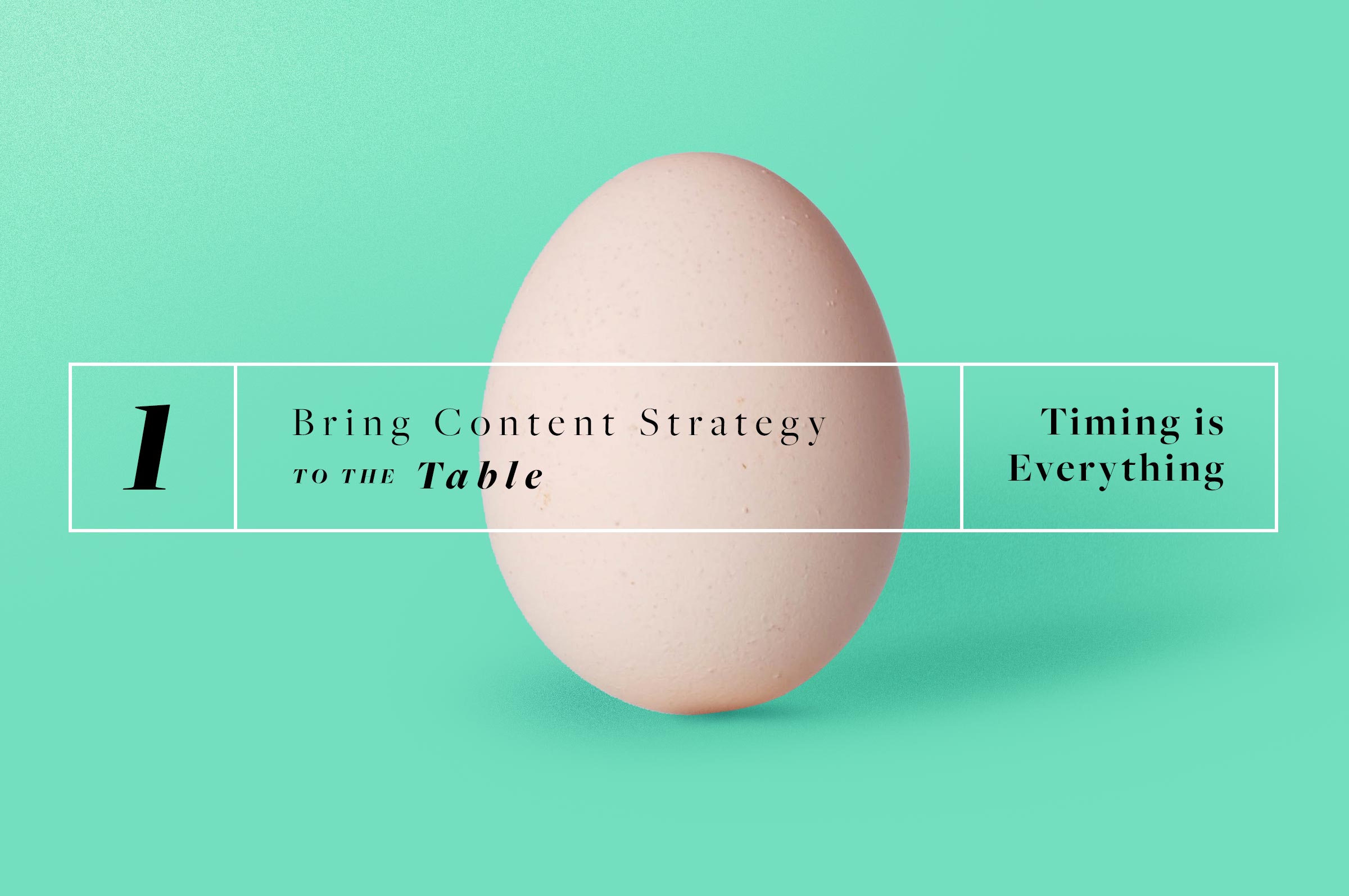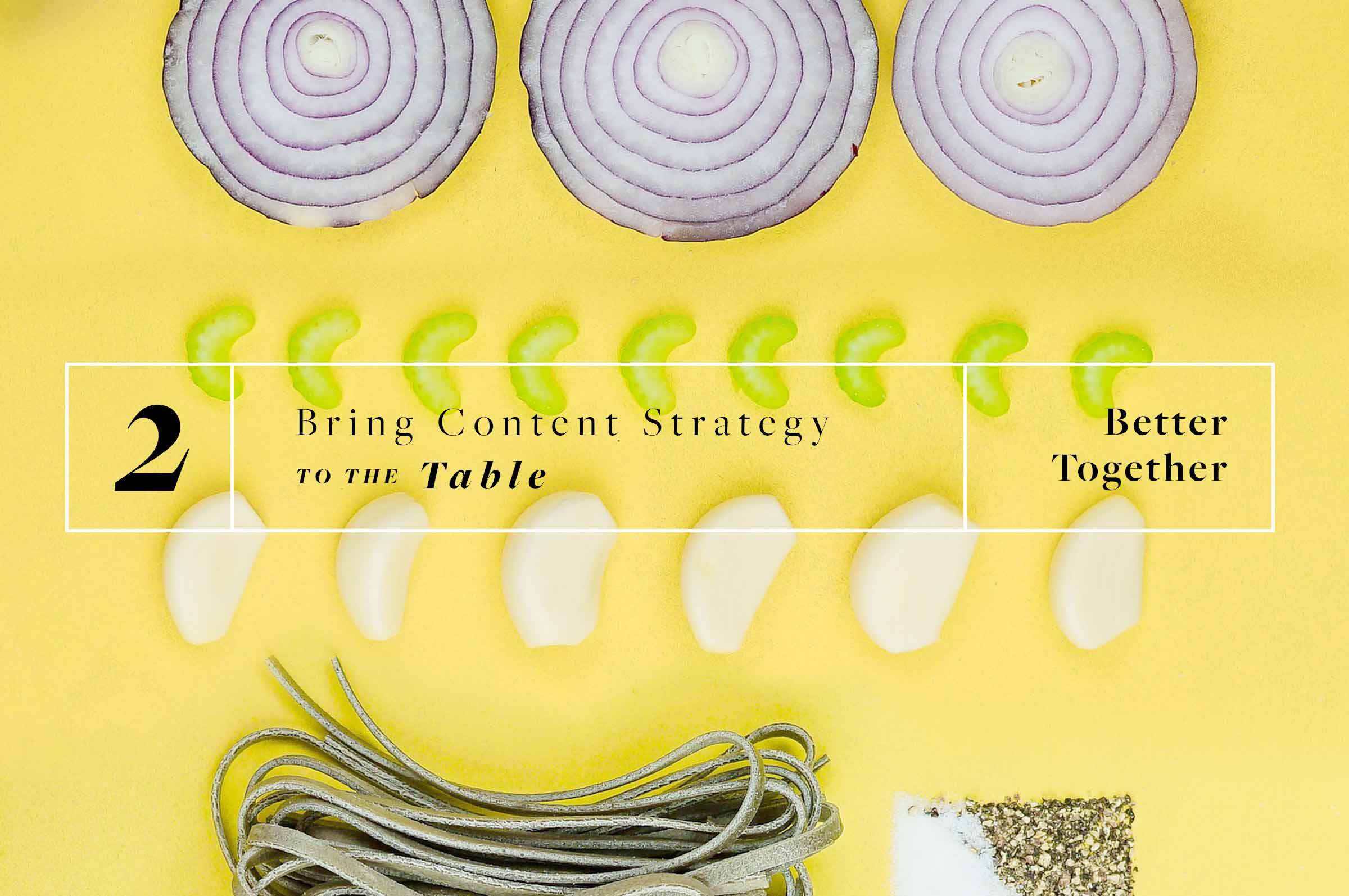Bring Content Strategy to the Table: Less Words, More Thought
4 min read
Content strategy is often viewed as dealing with the written portion of a project, and it’s true that it does involve a fair bit of writing. But you’re making a big, project-sinking mistake if you think content strategy is about words alone. Writing makes up a small part of any content strategy effort—and it can only happen after a good deal of preplanning, discussion, and careful consideration.
Less Content, More Strategy
To be truly effective, your content strategy professional must be empowered to do the underlying strategic legwork that drives content creation well before they ever write a single word. This is a game-changing practice. To support it, you’ll need to shift your team’s focus from short-term content fixes to long-term strategic solutions.
You’ll do this by practicing the following methods to prioritize a thoughtful, cohesive content strategy to empower your team to think more carefully about how they present information and actions in digital spaces.
Invest in content-specific research.
Internal business goals and biases will shape what you want to see in your site or app. But content strategy can make communicative sense of stakeholder insights, objective analysis, and a deep knowledge of existing assets to guide you toward creating a realistic, actionable, and truly helpful digital experience.
Make time for early content discussions with users, stakeholders, product managers, designers, developers, and other product team members. Make sure your content strategy professional has time and budget for comprehensive reviews and assessments of existing and needed content. This early content strategy work will help you know you’re creating the right content—and presenting it the right way—for your users.
Foster contextual awareness.
Anticipating user needs is a cornerstone of excellent UX. This means not only having a firm grasp on who the user is (hint: it’s not everyone) but also knowing what needs to be communicated at each point of interaction with your site or app (hint: it’s not everything, all at once). Content strategy focuses on how to present content in the most digestible, sensible way. Instead of working on messaging and interactions in pre-assigned chunks, your content strategy professional will need to be involved in every decision about interactions. This means from the highest, most strategic view of your site or app, all the way down to individual pages and, yes, words.
Favor economy.
If your site or app isn’t effectively communicating something to your users, you might be tempted to throw more words at the problem. If users overlook an important action, for example, you might make the text BOLD and change the color to red. You might repeat it elsewhere on the page, creating redundancy. Or you might overexplain the point by using too many words instead of finding the right ones.
Less is more, as they say, and this is especially true for digital content. Perhaps your users are missing the action because too many words or too much information is getting in the way of being able to see what they should do. Perhaps the action isn’t contextually appropriate and would be more useful somewhere else. In these cases, more words will only make the problem worse. Content strategy thinking will help identify the real issue and determine the best solution.
Consider the impact of any updates to content strategy.
Remember: Content means every piece of information present on your site or app. It’s too easy to think of changes to content as being “just words” that have no impact on usability and interactions. Really, there are very few content changes you can make that won’t impact the integrity of your digital product. Changing or adding navigation items, updating contact methods, swapping out photos, or adding a file: all of this will have an impact on your overall content strategy. Even if it seems like a small change, consult with your content strategy professional to make sure you don’t create an awkward interaction, invite inconsistencies, or flat out break part of the experience.
Follow governance guidelines.
At its heart, content strategy is thoughtful communication. This means ascertaining the ultimate value, role, workflow, and lifecycle of every piece of information on the site, specifically in the context of user needs and business requirements. Your content strategy professional should set rules to keep interactions and messaging highly relevant, useful, and helpful. These standards keep your content consistent, accurate, organized, relevant, and findable, all of which directly impacts the longevity of your site or app. Disregard the guidelines set out for content strategy at your own peril.
A Clear Win
Words play a crucial, highly visible role in content strategy, but they’re nothing without a thoughtful underlying plan guiding you to success. Successful content strategy does the important work of defining how presentation of information and actions will impact your overall experience, as well as how the individual parts ultimately fit together into a cohesive whole beloved by users. Much of this work happens well before a single word is ever written. When content strategy is done right, these strategic insights will inform every step of the project, from the early most phases of Discovery right up to product launch, and for all of maintenance and beyond.





